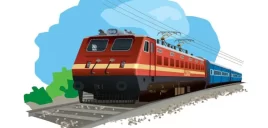The first electric train ran between Bombay’s Victoria Terminus and Kurla along the Harbour Line of CR, on February 3, 1925, a distance of 9.5 miles. In 1926, Thana and Mahim were connected. In 1927, electrification was complete up to Kalyan. In 1928, Borivili in the north was connected (Colaba-Borivili of WR being inaugurated on May 1). In 1929, Kalyan – Igatpuri section was commissioned. In 1930, the Kalyan – Poona tracks were opened to electric trains.
On November 15, 1931, electrification of the meter gauge track between Madras Beach and Tambaram was inaugurated (1.5kV DC). After that the only electrification project undertaken was Borivili – Virar, finished in 1936. For mainline traffic, GIPR undertook electrification of the Karjat-Pune and Kasara-Igatpuri sections because it was realized that the heavy traffic to and from Bombay would be suitable for electric haulage.
ये भी पढ़े – अनोखा शहर जहां दो महीने का दिन होता है और 1.5 महीने की रात
Following this there was a long gap, and the next electrification project started only 1953 or 1954, in the Calcutta area (Howrah-Burdwan via Bandel, Sheoraphulli-Tarakeshwar), using 3kV DC traction. At this time, the idea of mainline electrification (Howrah-Mughalsarai) was seriously mooted. Support for 25kV AC traction was also growing at about this time, especially after some trials of AC locos from SNCF, and studies that concluded that the single-phase load from electric traction would not seriously unbalance the 3-phase regional grids.
So the Calcutta area electrification was done keeping in mind the eventual migration to 25kV AC system, in terms of the technical requirements (insulator specifications, etc.). The first 25kV AC electrified section was Burdwan-Mughalsarai, completed in 1957, followed by the Tatanagar-Rourkela section on the Howrah-Bombay route. The first actual train run (apart from trial runs) using 25kV AC was on December 15, 1959, on the Kendposi-Rajkharswan section (SER). Howrah-Gaya was electrified by about 1960. Electrification till Kanpur on the Howrah-Delhi route was done by about 1972, and the entire Howrah-Delhi route was electrified on August 5, 1976. The Bombay-Delhi route was electrified by February 1, 1988.
Through the 1960s and early 1970s numerous studies were commissioned to investigate the question of which of diesel or electric traction was really more economical and better in the long run for IR. Most of these leaned towards electrification, especially for high-traffic sections. The rise in oil prices in the mid-1970s tilted the argument further in favour of electric traction as electricity generation in most of India is hydroelectric or coal-based.
India took the plunge from DC to AC electric traction in the mid-1950s, as mentioned above. Since French developments led the field, the AC locomotives supplied at first (from SNCF) followed that country’s practice, whether built in India or France. These were the eight-wheeled WAM-1 locomotives that are still in operation in some places.
The first train to be hauled by an electric locomotive from Delhi Jn. was the Assam Mail.
Bombay-Delhi (WR) route was fully electrified by Dec. 1987. The CR route was fully electrified by June 1990, when the Bhusaval – Itarsi section was electrified.
The 2 * 25kV AC system (see below) began to be put in place in the 1990s; the first regular service using this system was between Bina and Katni (CR) on January 16, 1995. This was later extended to Bishrampur.
[12/04] With the BG conversion between Tambaram and Madras Beach complete, the only electrified MG line on IR is the Tambaram – Villupuram stretch. However, no train uses electric traction (the YAM 1 locomotives used to service this section have been dismantled). Madras Beach – Tambaram was originally on 1.5kV DC electrification but was converted around 1968 to the 25kV AC system.
After a period of about 25 years of aggressive electrification, now [12/04] IR has most of the busy routes of its network electrified (although not all), and this has resulted in about 65% of the traffic being hauled by electric traction. Recently [12/04], therefore, IR has decided to slow down the pace of electrification — about 2600km of routes are scheduled to be electrified in the next 10 years, compared to 5100km in the past 10 years. The focus will be on consolidating electric traction for the busiest sections; some of the sections that will be converted to electric traction in the next few years are Pune-Guntakal, Bina-Kota, and many ‘B’ sections of NR.
Source – IFRCA.org
This entry was posted in 2 Railway Employee, STUDY NEW, Railway Employee











